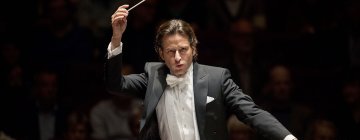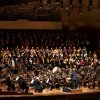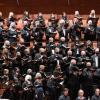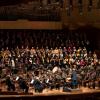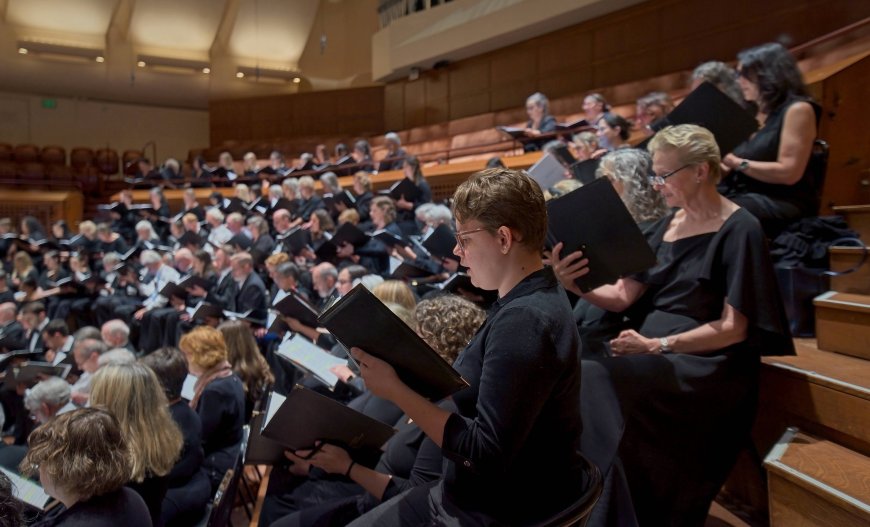
While Johannes Brahms’s Ein Deutsches Requiem is a work of great lyric beauty, it places heavy demands on its chorus. The vocalists sing for most of the piece’s 70-plus minutes, and the range and intricacy of the vocal lines require great concentration.
Not surprisingly, San Francisco Choral Society’s 2025 Summer Festival Chorus, conducted by Artistic Director Robert Geary, succeeded magnificently in meeting those challenges on Saturday, August 16, at Davies Symphony Hall.
The mostly nonprofessional 160-singer chorus not only showed the technical prowess it’s known for but — accompanied by the California Chamber Symphony — also conveyed the full emotional depth of the Requiem. Following Geary’s lead, the singers heightened the internal tensions and contrasts in each movement, and made the audience feel that the calm, transcendent joy with which the work ends had been earned.
Brahms’s Requiem, as is often pointed out, sets passages of scripture from the German Bible rather than the text of the mass for the dead. The 19th-century composer intentionally left out the death and resurrection of Jesus, which for Christians is the key to salvation, because this work is about finding consolation after grief.
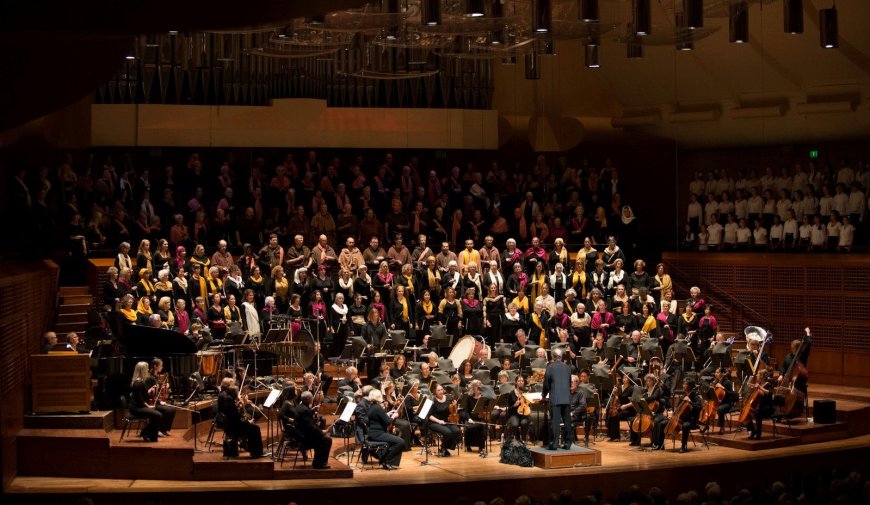
Each movement, except the fourth, portrays that conciliatory trajectory in a different way. The first movement, for example, begins with the beatitude, “Blessed are they that mourn, for they shall be comforted,” in a slow tempo scored without violins or flutes. It then moves to a flowing section that sets to music an excerpt from Psalm 126, “They that sow in tears shall reap in joy.”
The second movement begins with a quasi-funeral march and the line, “For all flesh is as grass.” Suddenly, the sun comes out in the major key, backed by fanfares and a faster tempo, as the chorus breaks into a fugue. The movement ends with “joy, everlasting joy.”
Geary’s approach was to maximize these contrasts. In the sixth movement, where the composer indicated “Vivace” for “the trumpet shall sound,” the conductor pushed the tempo to the limit — and it was breathtaking. The C-major fugue that followed rode that momentum to the end. The chorus and orchestra held the final chord long enough that the audience barely suppressed its applause at the cut off. But the chorus was right with Geary, with clear diction and sharp rhythm, despite the speedy tempo.
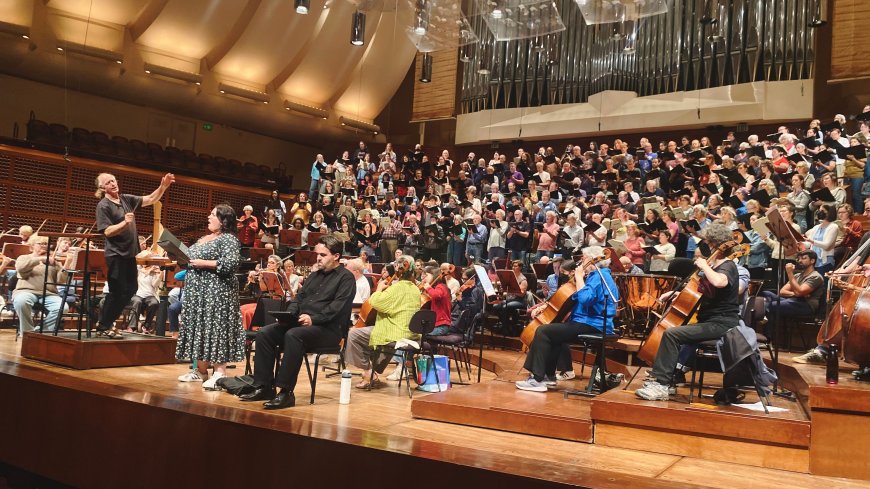
There could have been greater use of rubato, but the chorus shaped the phrases beautifully, swelling in the middle and tapering them toward the end, even in the midst of a complicated fugue. The fourth movement, “Wie lieblich sind deine Wohnungen” (“how amiable are thy tabernacles”) was gorgeous in its simplicity, sung with a rounded tone in all the sections.
Beyond the Choral Society’s collective strength, the evening was enriched by two capable young singers as the soloists. Baritone Andrew Pardini, who sings with the San Francisco Opera Chorus, displayed a firm voice with a warm tone. Soprano Cara Gabrielson, who has soloed with the San Francisco Symphony and other local opera companies, possesses a big voice that is well-controlled with a lovely, comfortable midrange.
The orchestra was balanced and fully part of the performance as well, accompanying the singers with a full range of emotion, while never coming close to overpowering them. All the instrumentalists played well, but the moderately-sized string sections were especially impressive, producing a sonic sheen that made them sound double their size.
